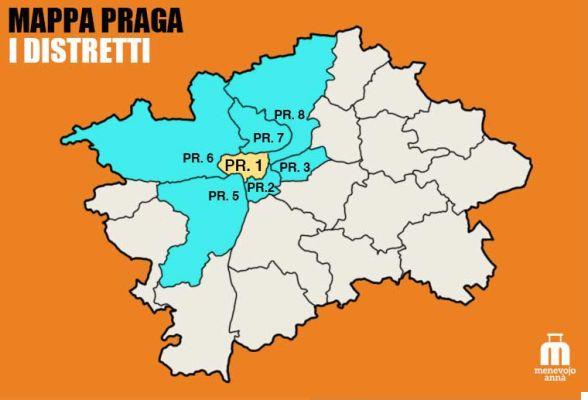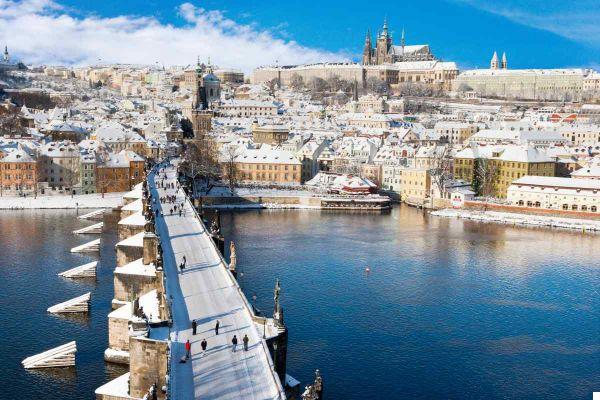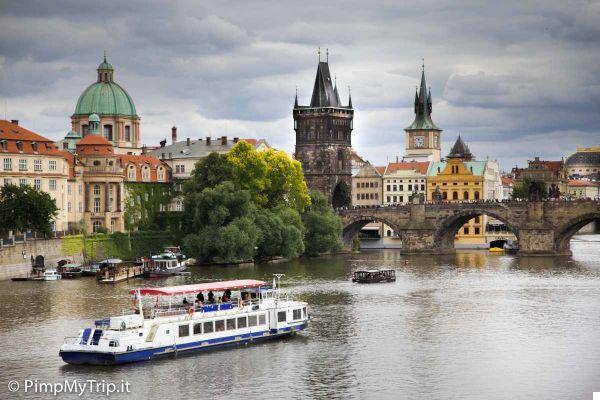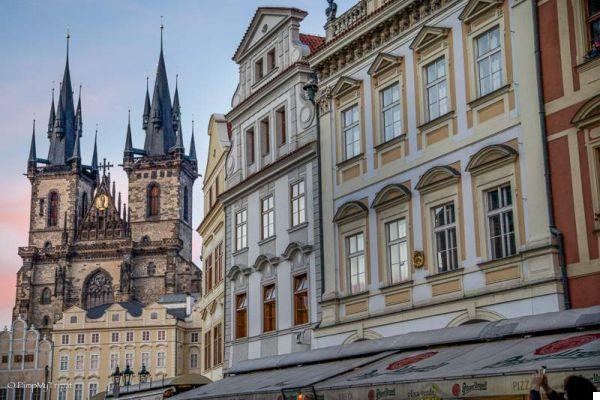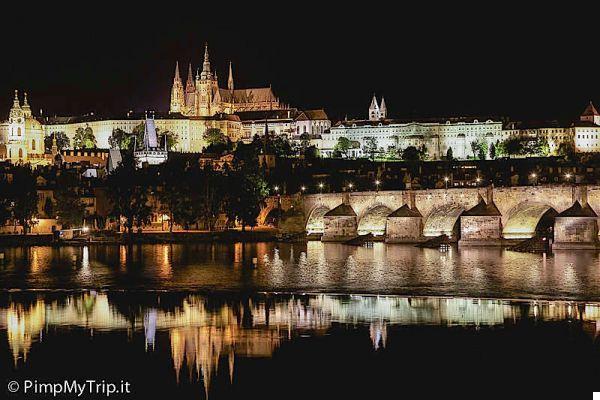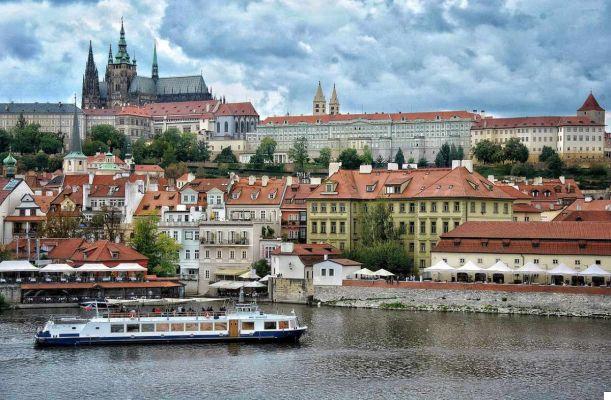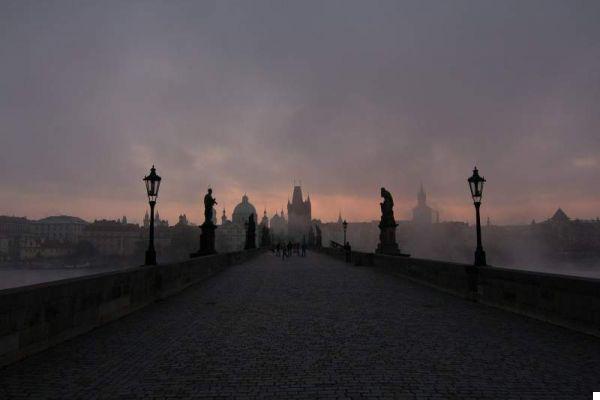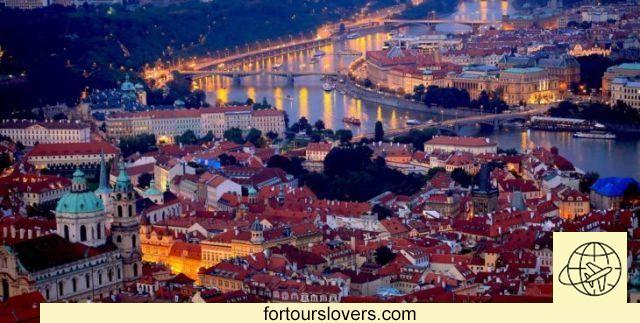
Prague
10 things to do and see in Prague and 1 not to do"Prague does not give up any of those he has captured". More than 40 years later, this sentence by the professor, writer and poet Angelo Maria Ripellino (1923 -1978) perfectly explains the magic of the city. Not surprisingly, the book in which it is contained is called "Magic Prague", to point out from the title the great power of fascination that the capital of the Czech Republic has been exercising for millennia on whoever comes into contact with us. Not all, though. Only on those who are willing to visit it in depth or, as it was once said, to deepen its “genius loci”. Cafeterias, breweries, avenues, churches, palaces and an infinity of other monuments that risk not "giving up" anymore. In addition to cultureHowever, Prague is a city that also offers a lot divertissement, which is why it is visited every year by millions of tourists, mostly young and very young. Here are some useful tips on what to see in the city. Happy reading.
1 Charles Bridge
The "quintessence of Prague experiences". So Lonely Planet describes Charles Bridge (Karluv Most), the bridge that connects the Old City (Staré Město) al Small Quarter (Malá Strana). The work was commissioned in 1357 byHoly Roman Emperor, as well as King of Bohemia Charles IV, and it is said it was made by mixing hundreds of thousands of egg yolks together withsandstone to make the structure stronger and able to withstand the floods of Vltava river. Legend or not it is a fact that this bridge has resisted over five centuries, not only to the "whims" of the river (the last floods in 2002 and 2013), but also to the traffic of carriages, cars, tracked vehicles and public transport from which it was spared only after World War II. At the two ends as many have been erected watchtowers, while numerous have been placed on the sides of the bridge since the XNUMXth century devotional statues (the most famous is that of St. John of Nepomuk). The Charles Bridge is frequented all year round by street artists and musicians, peddlers and one uninterrupted flow of tourists who visit the city 365 days a year. The early morning and sunset the best moments for take pictures.
2 The Castle
La official residence of the president of the Czech Republic and, even before that, of the princes, bishops and kings who ruled over the region. Sometimes, as in the case of Charles IV (1346-1378) and Rudolph II of Habsburg (1552 -1612), making it the seat of the Holy Roman Empire. In truth, unlike what the name suggests, it is a complex of churches, towers, courtyards and palaces quite vast, built in over 1000 years of history. The oldest building is the Church of the Virgin Mary commissioned in 880 by Prince Bořivoj of the Přemyslid dynasty. From the XNUMXth century, however, the Basilica of San Giorgio and Royal Palace which over the years has been rebuilt several times with the inevitable superimposition of styles (Romanesque, Gothic, Renaissance). The last restorations were carried out in the aftermath of collapse of the communist regime in Czechoslovakia even if, it must be said, it has only been possible to partially restore the ancient majesty to places so full of history. In fact, in this fortified citadel, crucial events for the history of the territory took place, such as theassassination of St. Wenceslas by the hand of his brother Boleslao, and the revolt that in 1618 gave way to the famous Thirty Years War. The Prague Castle can be reached both at piedi in that tram o taxi. There are also different formulas for the visit (with relative variation of the entrance cost - the standard ticket costs about € 13.00).
3 Cathedral of San VIto
While being part of the Prague Castle, the Cathedral of San Vito deserves to be mentioned separately. This is the most impressive cathedral in the whole of the Czech Republic with a centuries-old history behind it. The oldest parts are in fact from the 300th century; the more modern ones even from the early 900s (1929 to be precise). It is inevitable that, despite the attempt to maintain a style as faithful as possible to thegothic imprint of the fourteenth century, the church appears divided in half between an older part, which includes the silver tomb of St. John of Nepomuk Gold Chapel of St. Wenceslas and a dozen others royal tombs, and a more modern part which, however, is no less from an artistic point of view. To see, in this regard, the stained glass window depicting the blessing of Saints Cyril and Methodius realized by Alfons Mucha, a painter who lived between the nineteenth and twentieth centuries and in whose honor there is also a museum not far from Wenceslas Square. Also not to be missed is the Campanile Tower which is located at the end of almost three hundred steps.
4 Wenceslas Square
Let's start immediately by saying that St. Wenceslas (Vaclavské Namesti) is not a real square. It's a long one avenue not far from the "Old City" famous for being the center of the nighttime fun of Prague. In truth, not only at night, since it is frequented at any time of the day. However, even this explanation is partial: Wenceslas Square, in fact, is much more than the symbol of Prague nightlife. Several took place here historical passages significant of the life of the city and the region: come on riots of 1848, To declaration of independence from the Austro-Hungarian Empire in 1918, until to street protests of 1968 against Soviet oppression. Protests culminated, the following year, in the terrible gesture of the philosophy student Jan Palach who, in the name of freedom, set himself on fire dying after a few days of agony. It is not over because it is always in this avenue that Vaclav Havel, protagonist of the "Velvet Revolution" who overthrew the regime in 1989, gave some of his most important speeches which later led him to be the first President of post-communist Czechoslovakia. In short, one square “young" concentrate of history and fun, which still gathers today near the equestrian statue of St. Wenceslas. To be seen!
5 Jewish Museum
Cross the narrow streets of the old Jewish quarter, visit the four synagogues and old cemetery where the Rabbi Jehuda Löw (according to the legend who invented the supernatural Golem), it is one of the things to do absolutely once in Prague. For over a century - to be precise, since 1906 - the Museum has fulfilled the task of keep the memory alive su one of the oldest ghettos in central Europe. Memory that during the Second World War was "enriched", so to speak, by the tragedy ofHolocaust: in the Pinkas synagogue the Memorial to the Bohemian and Moravian Jews killed by the Nazis and the exhibition with the drawings of the children locked up in ghetto of Terezín (Theresienstadt concentration camp) about 60 kilometers from Prague. The tourist portal of the city provides all the information on the different opening and closing times of the synagogues, the cemetery and the other buildings that make up the visit. For more information click here.
6 Dancing House
One of the main attractions of Prague is thearchitecture. The city, in fact, is an almost perfect compendium of over nine centuries of architectural evolution: Romanesque, Gothic, liberty, functionalism, up to the last trend that emerged at the end of the 80s of the last century and renamed deconstructivism. The Dancing House, in Nové Mesto neighborhood, is the emblem of this architectural style that prefers the sinuosity and plasticity of the lines, planes and axes irregular geometric shapes. The house was built between 1994 and 1996 thanks to the enormous financial resources of the Dutch insurance company Nationale Nederlanden (NIN then ING) that since 1992 had bought the land located on the ruins of a building destroyed during the Second World War. The idea of creating an icon of modern architecture in the city was endorsed by the then president Vaclav Havel who "covered" the heated debate in the city with his charisma. The building - designed by the Croatian architect Vlado Mulinic in cooperation with the Canadian Frank Gehry - represents a man (Fred Astair) and a woman (Ginger Rogers) dancing, hence the name "Dancing House". In addition to several offices, inside the building there is a restaurant, an art gallery and a luxury hotel. For a list of hotels in Prague click here.
7 The gardens
Not just architecture. THE historic houses parks and gardens are another point definitely in favor of Prague. Public green spaces they follow each other in the center and outside the city, giving tourists and residents the opportunity to use them all year round, even with snow. There are so many that it is difficult to remember them all: Vrtbovská, Ledeburská, Fürstenberská, Kolovratská, Petřín, Kinský are just some of the most famous, without of course forgetting the beautiful gardens of the Castle, all around the royal residence. Special mention for the Valdštejnská garden (Wallenstein) at the foot of the homonymous baroque palace built in the XNUMXth century. Here, especially during the summer, various cultural events take place, especially concerts, almost always with free admission. So take advantage of it and take everything you need with you on your trip for a long time picnic outdoors. For a complete overview of the gardens of Prague click here
8 The beer
Who owns the world record for per capita beer consumption? If you are thinking of England, Ireland or Germany (especially Munich, home of the Oktoberfest), well the answer is wrong. The record belongs to the Czech Republic. The other nations may export more, but this too is a constantly updated data. It is not the only peculiarity. The Czech Republic, in fact, in addition to having large producers capable of competing on the international market (Pilsner Urquell above all) boasts a multitude of medium and small breweries that operate mainly on the domestic market. Visiting Prague is therefore a unique opportunity to deepen the "Beer culture", obviously taking care of do not raise your elbow too high. In short, from the classic clear, to double malt beer, to the many possible flavors, Prague is the right place if you like them pub e breweries.
9 Prague with children
While being one monumental cityFull of museums, statues, works of art and historic buildings, Prague is also a city for children. First of all due to the presence of many public green spaces where they can roam and have fun in complete tranquility, but also because there are dedicated attractions such as Doll Museum (from antiquity to the present day) inside the Castle, and above all it zoo citizen. The latter was promptly renovated and opened to the public after the serious damage caused by the flooding of the Vltava river in 2002. And, speaking of Moldava, woe to forget the boat excursions. There are several routes, some of which are designed in combination with other tourist attractions for young and old. In short, you absolutely must not be afraid of planning a trip to Prague with children in tow. The attractions are not lacking, and a wise alternation between the paths preferred by adults at times, instead, dedicated to the fun of the little ones, is the right compromise that will make thePrague experience absolutely enjoyable. For the English version of the site of the Prague zoo click here
10 The surroundings
Everything around Prague is definitely worth visiting. For example, the beautiful sanctuary of St. John of Nepomuk in the town of Zdar nad Sazavou about 100 km from the capital. Or, Plzeň (or Pilsen, in the German style), home of the beer of the same name (Pilsner Urquell) which, as mentioned above, greatly contributes to the primacy of the Czech Republic as regards the annual per capita consumption of beer. Obviously the city "overflows" with pubs and breweries, but what you absolutely must visit is the beautiful Beer Museum which, in fact, constitutes the first tourist attraction of the city. It's not over because then there is the "Spa triangle" of Western Bohemia. We are talking about Carlsbad, Franzensbad e Marianske Lazne, three cities with a centuries-old thermal history, an annual destination for tourists from all over the world to benefit from the beneficial scents of their respective springs. Obviously, this is real spa district over the years it has greatly improved in terms of services and facilities, becoming a flagship (especially Karlovy Vary) of the tourist offer of the young Czech Republic. The top!
1 Don't wear valuables in certain areas of the city (watch your wallet)
"Beware of pickpockets" (Beware of pickpockets). This notice is now present in all European capitals and Prague is no exception. The places where thefts are most frequent are the most crowded. Two in particular: Carlo bridge e Wenceslas Square. The precautions are the "classic" ones we have already mentioned for other Italian and foreign destinations: do not carry a lot of cash with you; do not dress conspicuously (necklaces, bracelets, watches, etc.); make sure bags are always closed etc. In short, "small" precautions that serve to avoid "big" and unpleasant setbacks. For the rest, Prague is a safe city, without major dangers. Enjoy it without excessive worries. You will not be disappointed!




